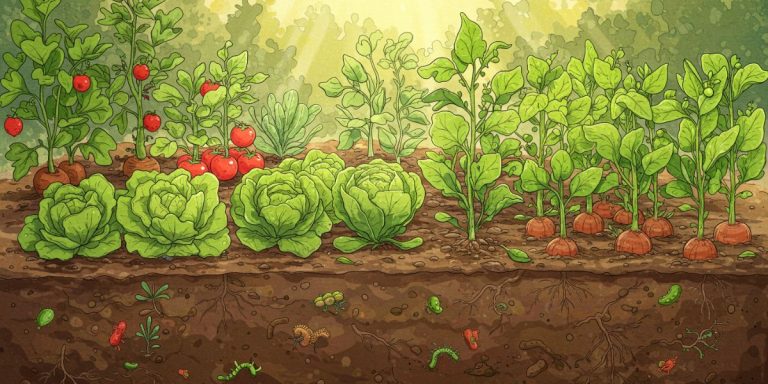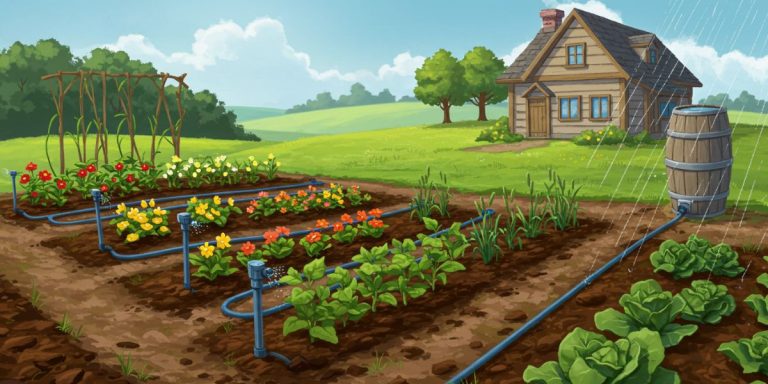12 Best Indoor Growing Systems: Top Brand Picks for 2025
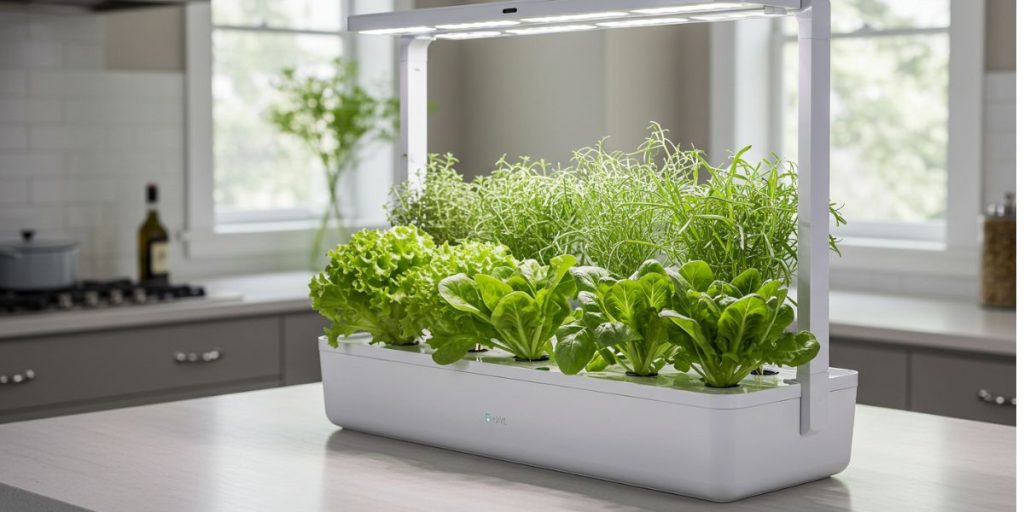
Growing fresh vegetables, herbs, and greens indoors has never been easier thanks to innovative indoor growing systems. Whether you’re dealing with limited outdoor space, harsh weather conditions, or simply want year-round access to homegrown produce, the best indoor growing systems can transform your home into a productive garden sanctuary.
Indoor growing systems offer precise control over growing conditions, faster growth rates, and the ability to grow fresh food regardless of season. We’ve selected the top brand in each category to give you the best options for every growing method and budget.
What are the Best Indoor Growing Systems?
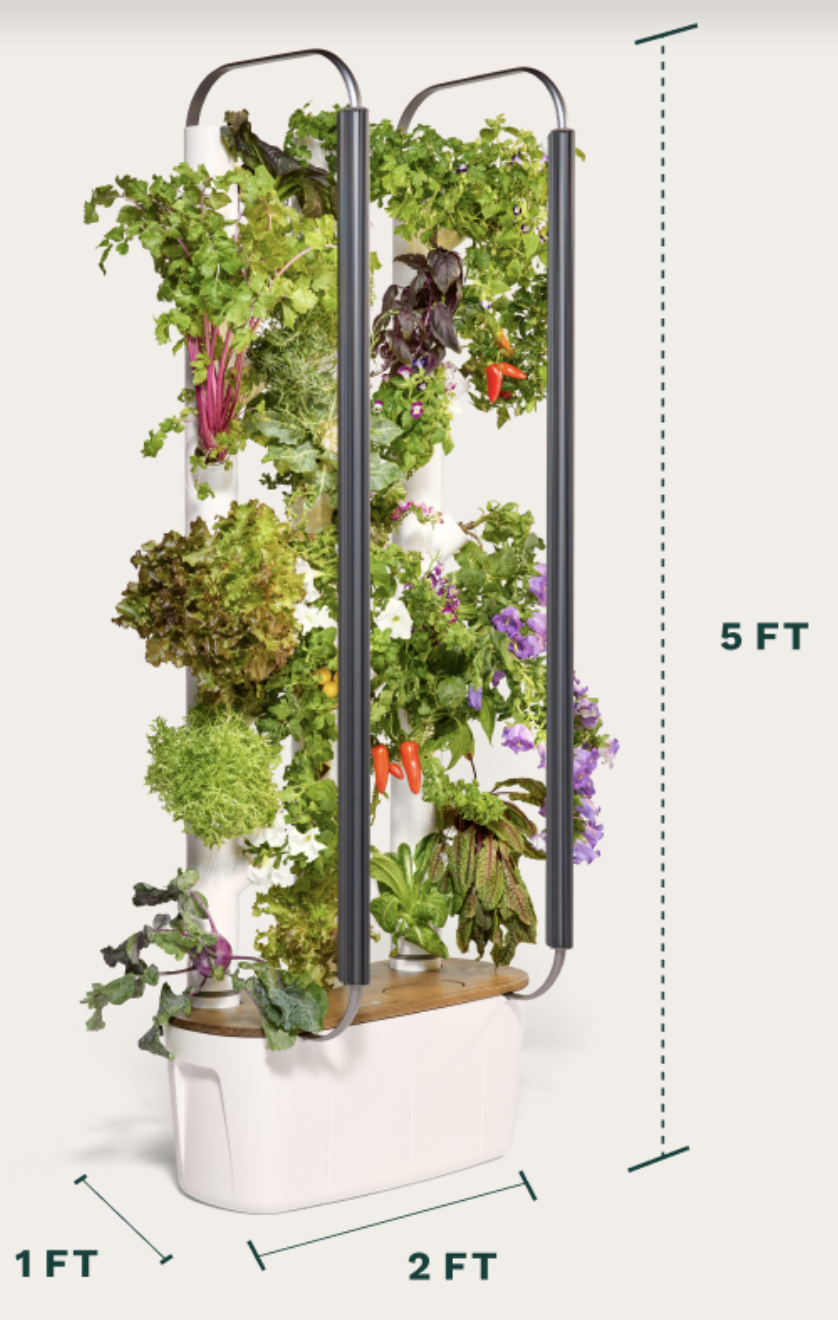
1. Gardyn Home 4.0 (Vertical Hydroponic System)
The Gardyn Home 4.0 is a premium vertical hydroponic tower that grows 30 plants simultaneously in just 2 square feet of floor space. This smart indoor garden represents the cutting edge of home growing technology, featuring an AI assistant called Kelby that monitors your plants 24/7 using integrated cameras and sensors. The system is designed to be completely self-sufficient, requiring no sunlight or water line – just power and Wi-Fi.
Product Pros
Product Cons
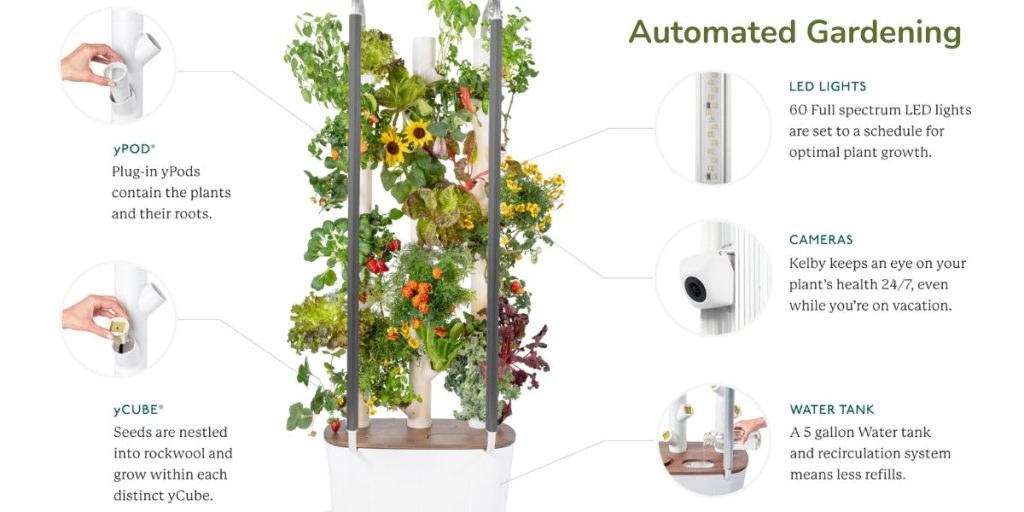
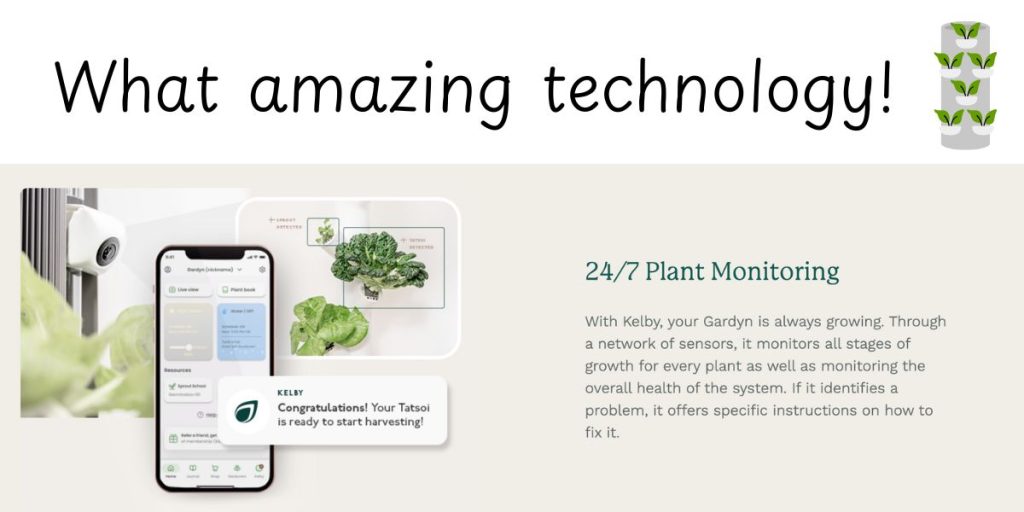
Best for: Tech-savvy gardeners who want maximum yields and AI-powered automation in minimal space
Brand Background: Gardyn has established itself as a leader in smart indoor gardening technology, focusing on vertical growing systems that maximize yield per square foot. The company has built a comprehensive ecosystem around their hardware, including an extensive mobile app, AI monitoring, and a wide variety of seeds and growing supplies.
Best Plants: Leafy greens, herbs, cherry tomatoes, peppers, strawberries, flowers, and even mini pumpkins and eggplants
Price Range: $899 for the Home 4.0 system, plus ongoing costs for yCube refills and plant food. Gardyn does offer financing, if needed. They also have a smaller version for $500.
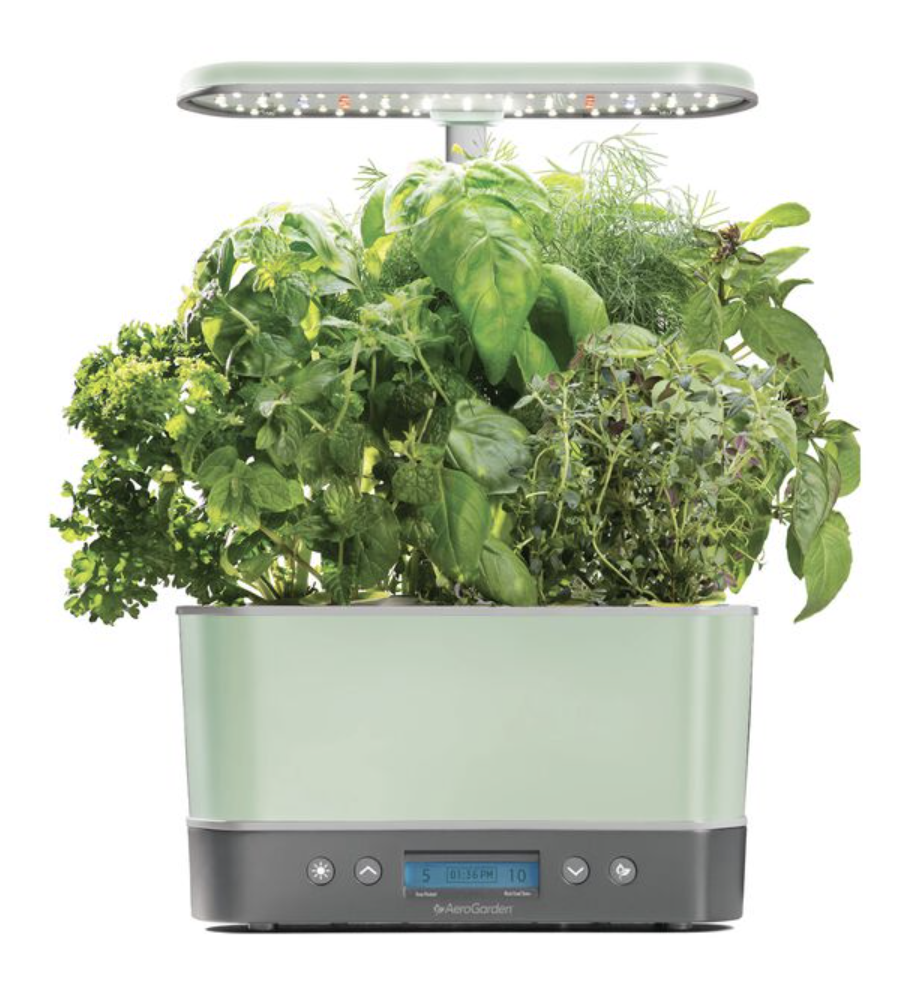
2. AeroGarden Harvest Elite (Hydroponic System)
The AeroGarden Harvest Elite is the gold standard for entry-level hydroponic growing. This countertop system uses a simple water and nutrient-based growing method that delivers nutrients directly to plant roots. AeroGarden has perfected the beginner-friendly hydroponic experience with their patented growing pods and full-spectrum LED lighting system.
Product Pros
Product Cons
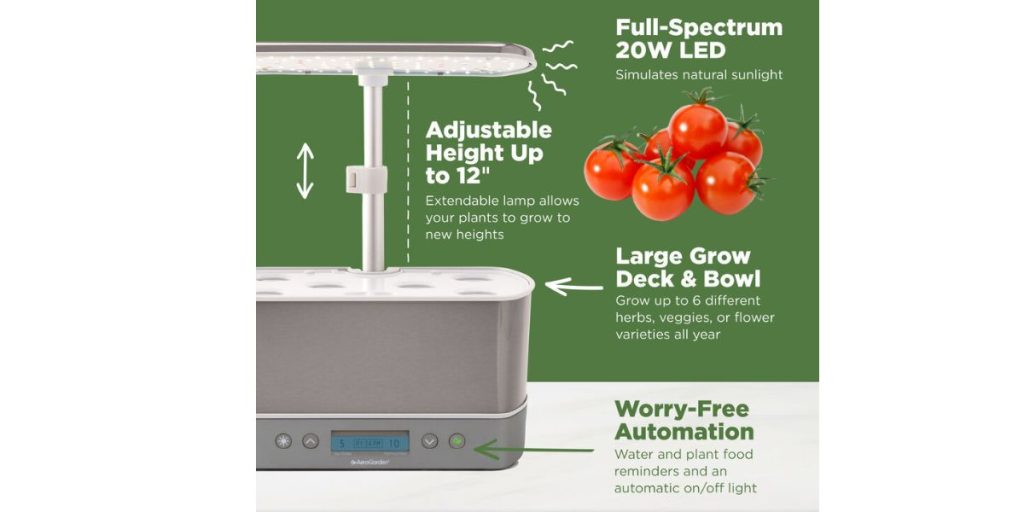
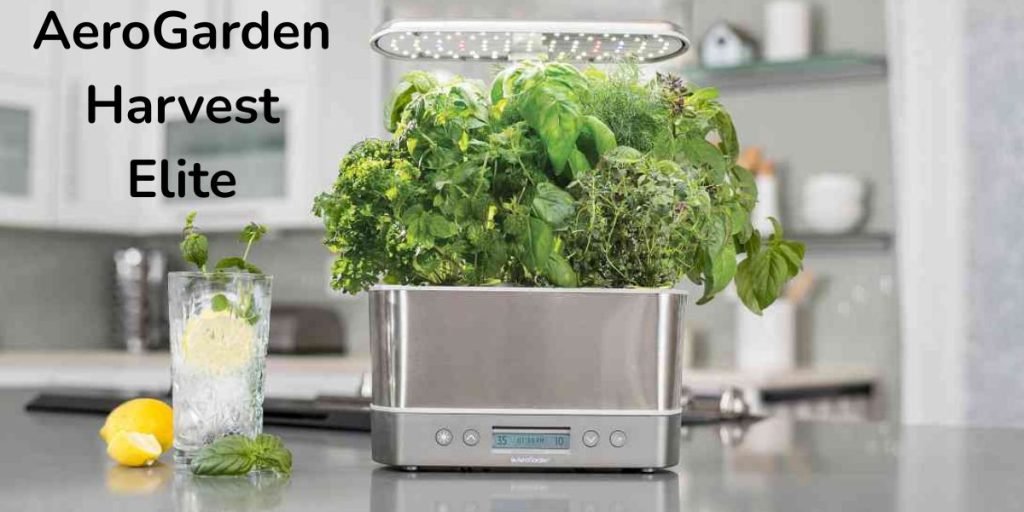
Best for: Beginners wanting fast-growing vegetables and herbs with minimal setup
Brand Background: AeroGarden pioneered the home hydroponic market over 15 years ago and remains the most recognized brand. Their systems are sold in major retailers and backed by extensive customer support and growing guides.
Best Plants: Basil, parsley, dill, mint, lettuce, cherry tomatoes
Price Range: $80-$125 for the system, $15-$20 for replacement pod kits

3. Tower Garden by Juice Plus (Aeroponic System)
Tower Garden revolutionized home aeroponics with their vertical growing system that can produce the equivalent of a 40-square-foot garden in just 3 square feet. This professional-grade system suspends plant roots in air and delivers nutrients through precision misting, resulting in 30% faster growth than traditional hydroponics.
Product Pros
Product Cons

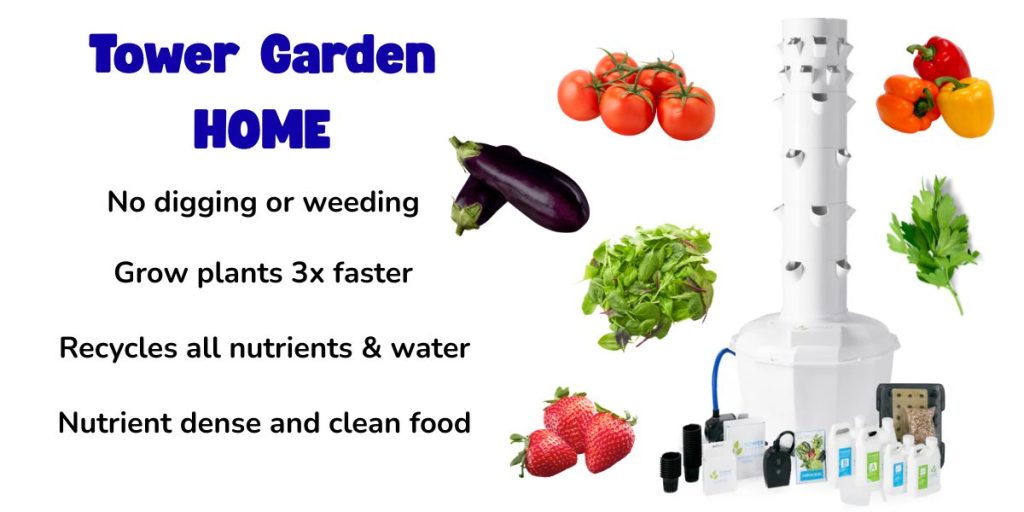
Best for: Serious growers wanting maximum yields in minimal space
Brand Background: Tower Garden is backed by Juice Plus, a health and wellness company focused on plant-based nutrition. Their aeroponic technology was originally developed for Disney’s Epcot Center and is now used in schools and homes worldwide.
Best Plants: Leafy greens, herbs, tomatoes, peppers, strawberries, eggplant
Price Range: $670-$800+ for home systems, $14+ for seedling kits

4. Lettuce Grow Farmstand (LED Growing Tower)
The Lettuce Grow Farmstand transforms any indoor space into a productive vertical farm. This sleek, restaurant-quality system stacks 36 plants in 5 vertical tiers, each with optimized LED lighting. The company focuses on sustainable growing with a mission to make fresh food accessible to everyone.
Product Pros
Product Cons
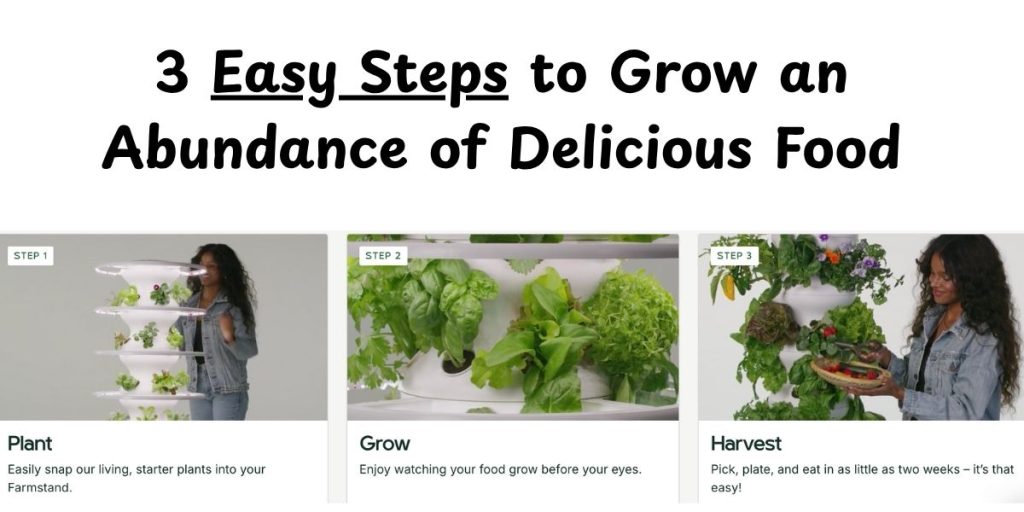
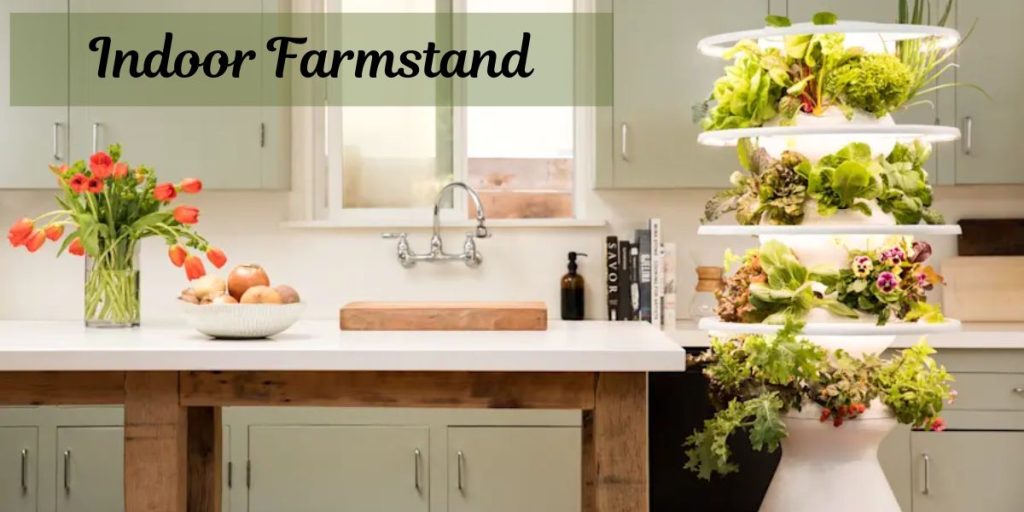
Best for: Maximizing fresh produce production in apartments and small homes
Brand Background: Lettuce Grow was founded by health-conscious parents wanting pesticide-free produce for their families. The company focuses on sustainable growing and offers extensive support through their online community and growing guides.
Best Plants: Lettuce varieties, spinach, kale, Swiss chard, herbs, microgreens
Price Range: $973-$1,423 for complete systems, $3 per plant thereafter (complete systems come with all the plants needed to get started). Financing is available.
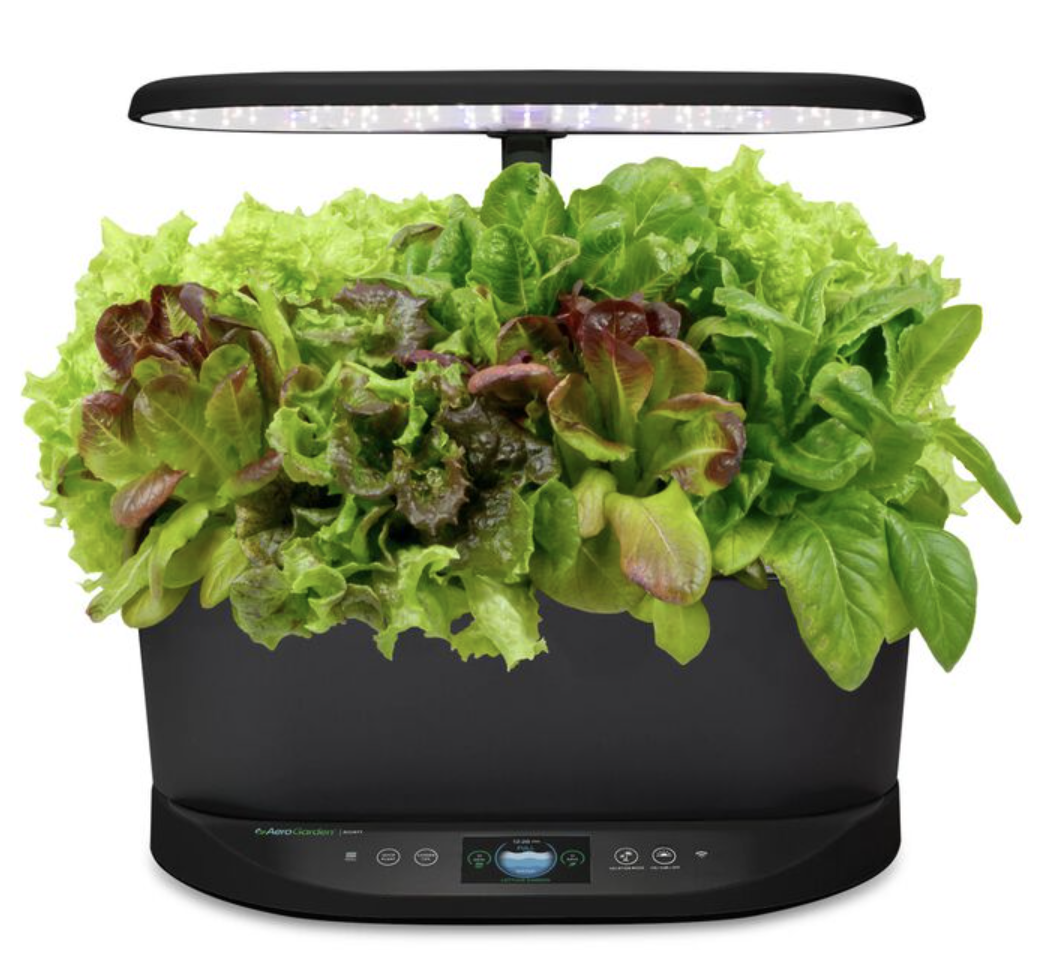
5. AeroGarden Bounty (Countertop Herb Garden)
The AeroGarden Bounty represents the pinnacle of countertop herb gardening, featuring a larger 9-pod capacity and upgraded 50-watt LED lighting system. This premium model includes WiFi connectivity for smartphone monitoring and control, making it perfect for busy households wanting fresh herbs without the maintenance.
Product Pros
Product Cons
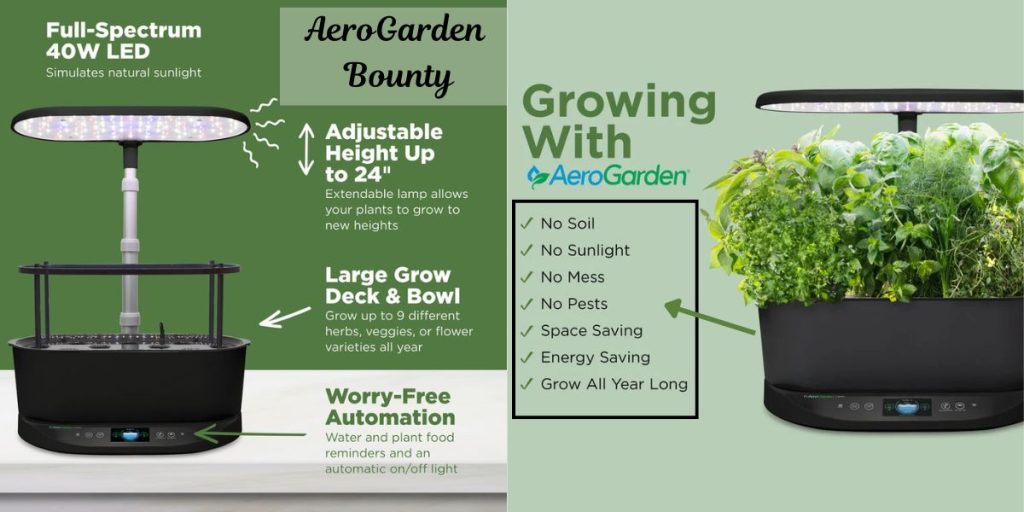
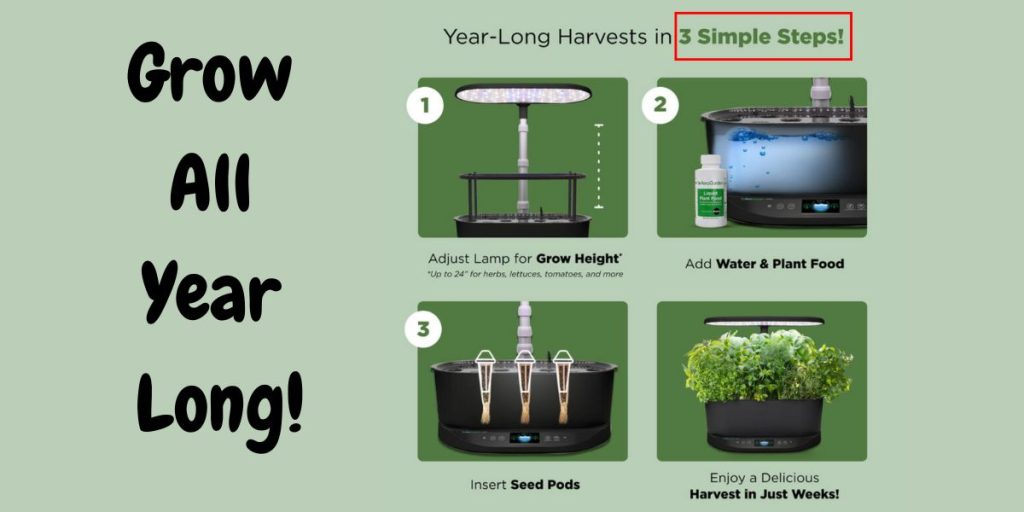
Best for: Kitchen herb growing with premium features and capacity
Brand Background: AeroGarden’s Bounty series represents their premium line, incorporating customer feedback and advanced technology. The Elite model specifically targets serious home cooks who want restaurant-quality herbs year-round.
Best Plants: Gourmet basil varieties, oregano, thyme, parsley, cilantro, dill
Price Range: $200-250 for the system, $20-25 for gourmet herb pod kits
Related post: To learn all about year-round gardening, check out this detailed guide.

6. VIVOSUN DWC Hydroponic System (Deep Water Culture)
VIVOSUN’s Deep Water Culture system offers professional hydroponic growing at an accessible price point. This 5-gallon bucket system oxygenates nutrient solution directly around plant roots, creating optimal growing conditions for leafy greens and herbs. VIVOSUN has built a reputation for reliable, affordable growing equipment.
Product Pros
Product Cons
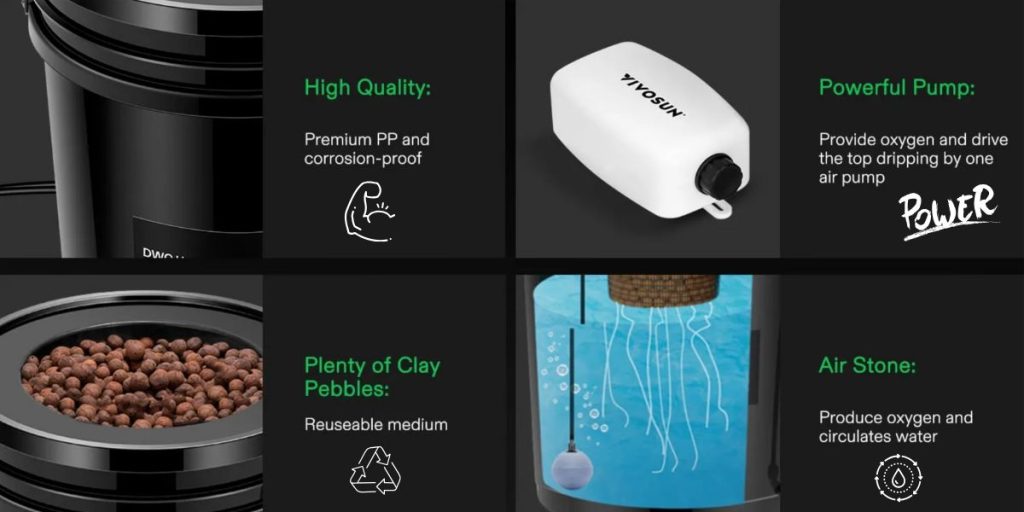
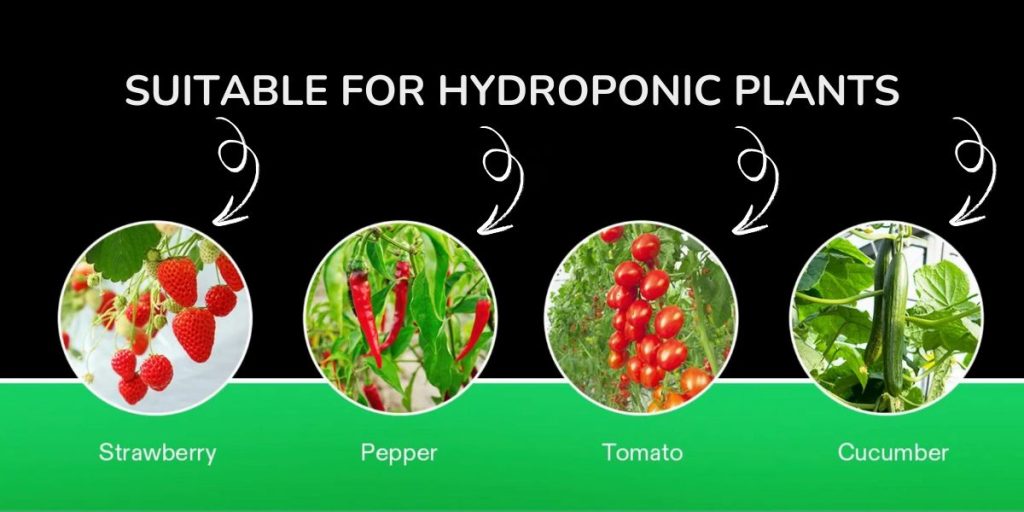
Best for: Budget-conscious growers wanting simple, effective hydroponics
Brand Background: VIVOSUN specializes in affordable indoor growing equipment with a focus on hydroponics and LED lighting. They’ve gained popularity among both beginners and experienced growers for offering professional-quality equipment at consumer prices.
Best Plants: Lettuce, spinach, bok choy, basil, mint, Swiss chard
Price Range: $35-50 for complete DWC kit, $15-25 for nutrients and pH supplies

7. Hydrofarm NFT Growing System (NFT System)
Hydrofarm’s NFT (Nutrient Film Technique) system brings commercial growing technology to home growers. This system circulates a thin film of nutrient solution through sloped channels, providing constant nutrition while maintaining excellent root oxygenation. Hydrofarm has been the leading supplier to commercial growers for decades.
Product Pros
Product Cons
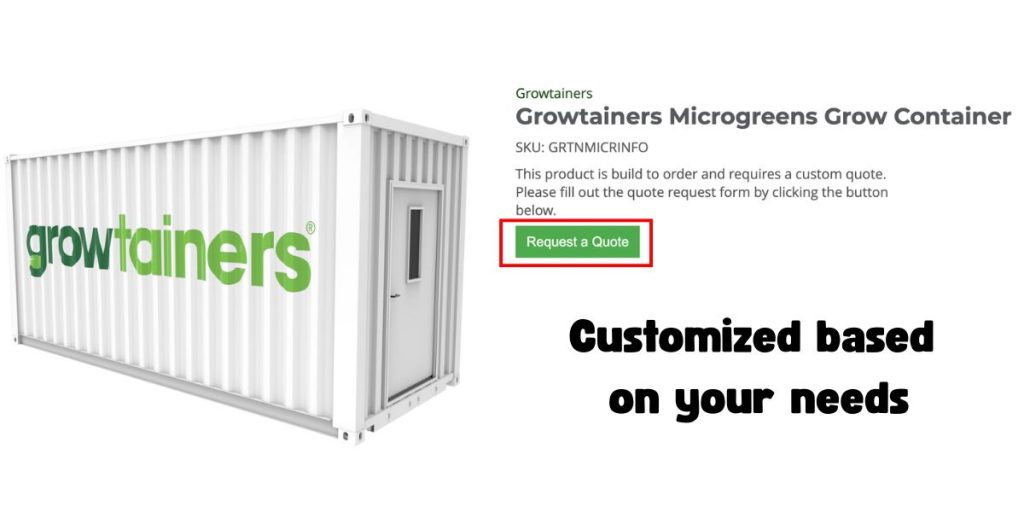
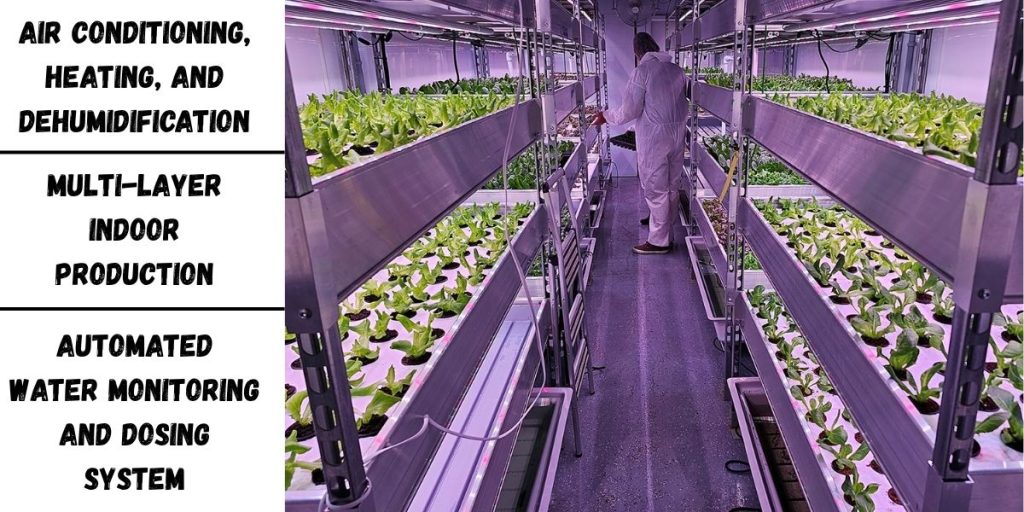
Best for: Continuous harvest systems and commercial-style growing
Brand Background: Hydrofarm has been the backbone of commercial hydroponic growing since 1977, supplying equipment to professional growers worldwide. Their home systems bring the same reliability and performance to residential growers.
Best Plants: Lettuce varieties, leafy Asian greens, herbs, strawberries
Price Range: Build-to-order and requires a custom quote
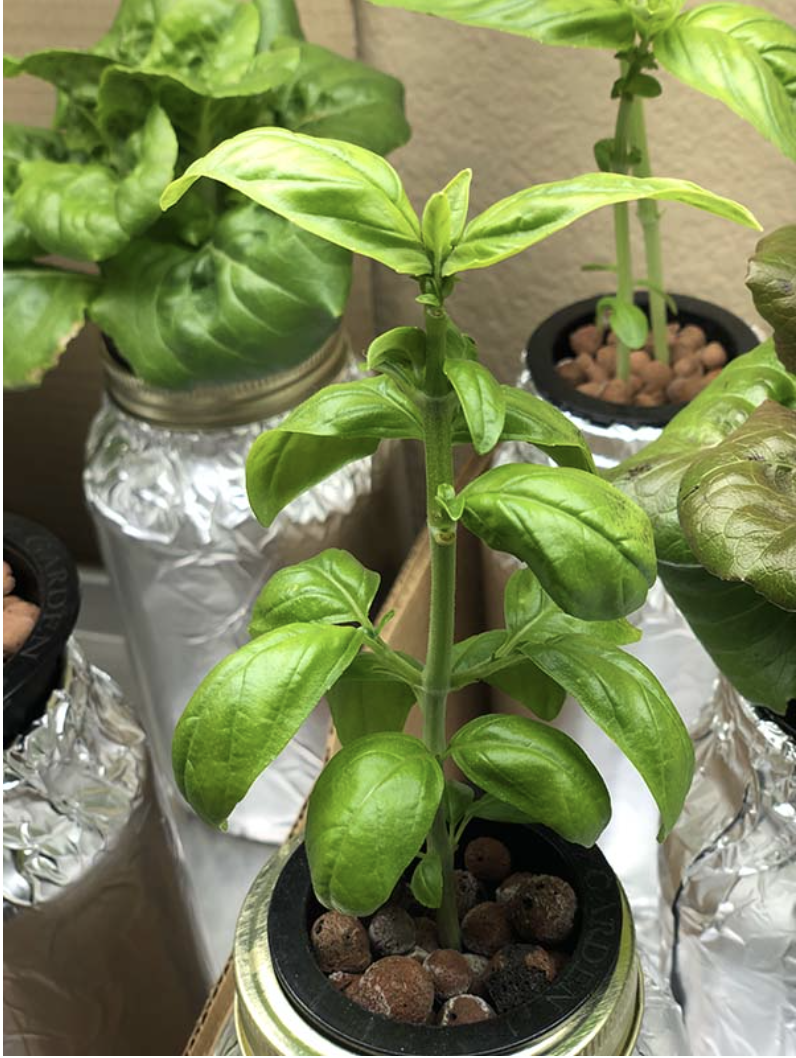
8. Mason Jar Kratky Setup (Kratky Method)
The Mason jar Kratky method represents the simplest possible hydroponic system – just a jar, lid, nutrient solution, and plant. This passive growing technique requires no electricity, pumps, or complex equipment while still delivering faster growth than soil. It’s perfect for anyone wanting to try hydroponics with minimal investment.
Product Pros
Product Cons
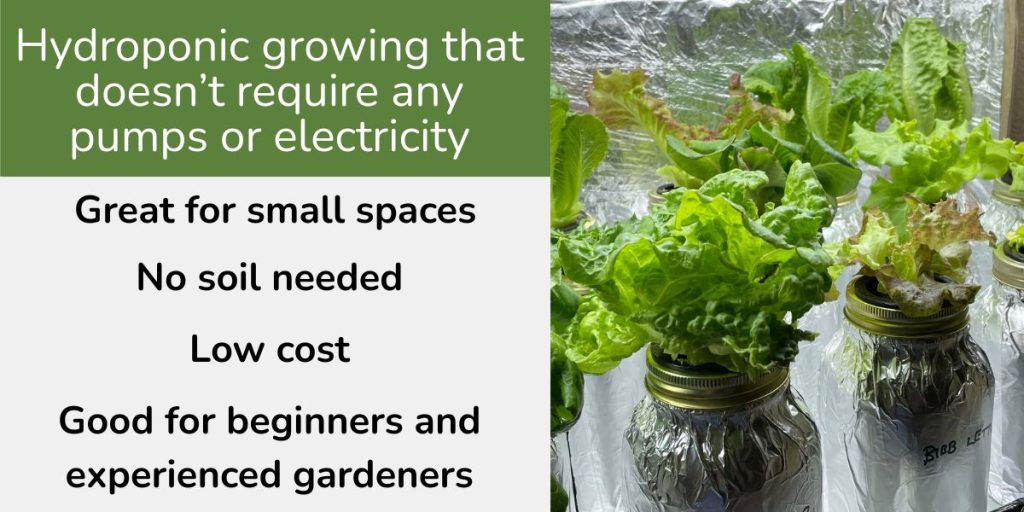
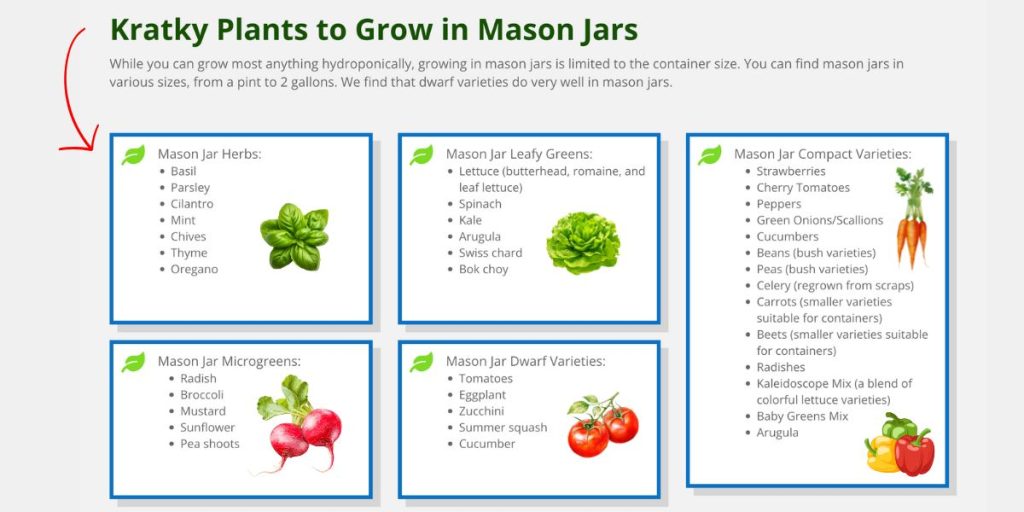
Best for: Off-grid growing and absolute beginners on tight budgets. This is one of the best indoor growing systems for minimalists.
Brand Background: The Kratky method was developed by Dr. Bernard Kratky at the University of Hawaii as a low-cost growing solution for developing regions. Mason jars are simply the most accessible containers for home implementation.
Best Plants: Lettuce, basil, green onions, spinach, Asian greens
Price Range: $5-10 per jar setup, $20-30 for nutrients and supplies
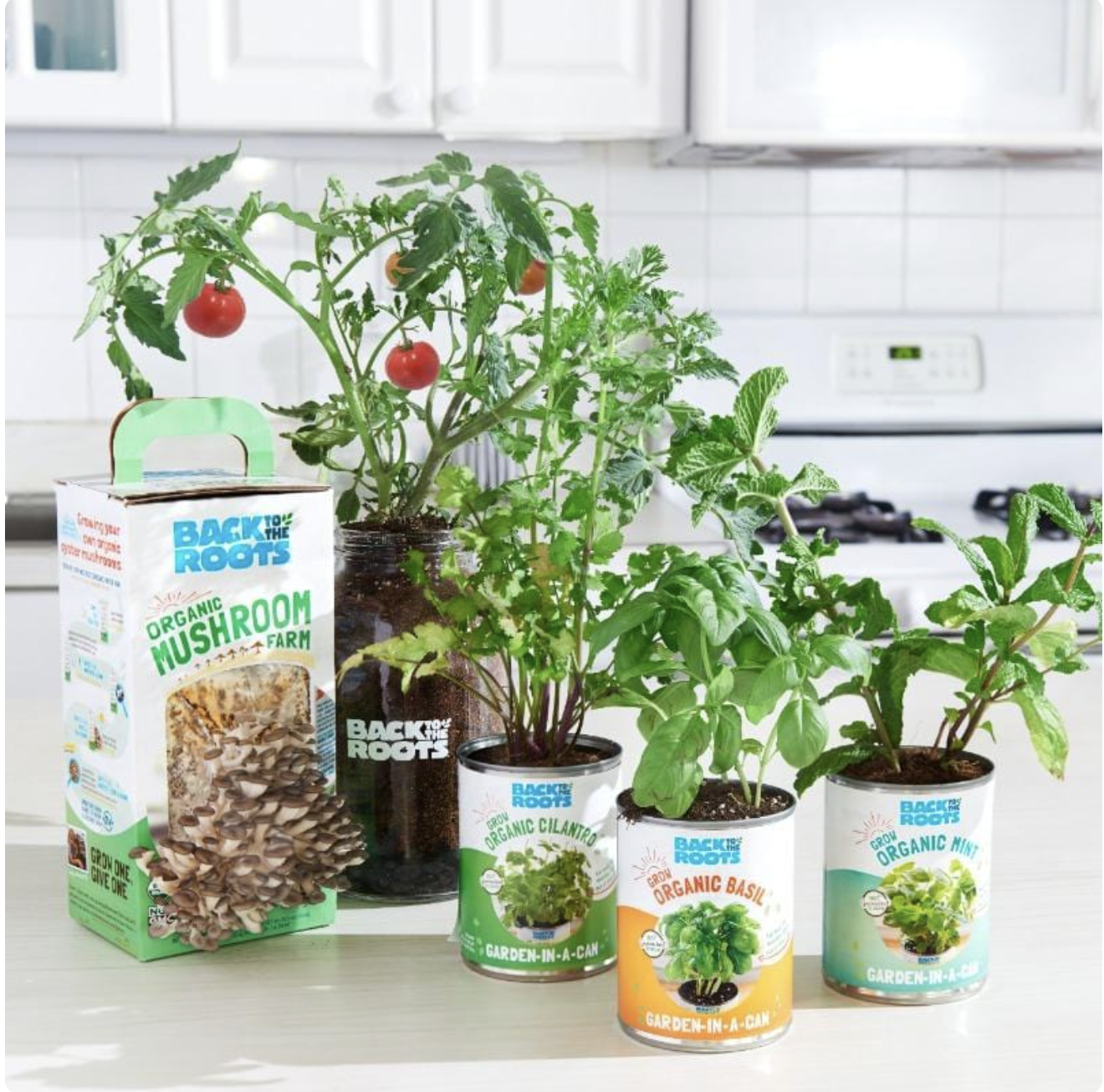
9. Back to the Roots Garden-in-a-Can (Soil-Based System)
Back to the Roots revolutionized beginner gardening with their innovative canned garden kits. Each recyclable steel can contains everything needed to grow herbs or vegetables – organic potting soil, seeds, and detailed instructions. This sustainable approach makes gardening accessible to anyone, regardless of experience level.
Product Pros
Product Cons
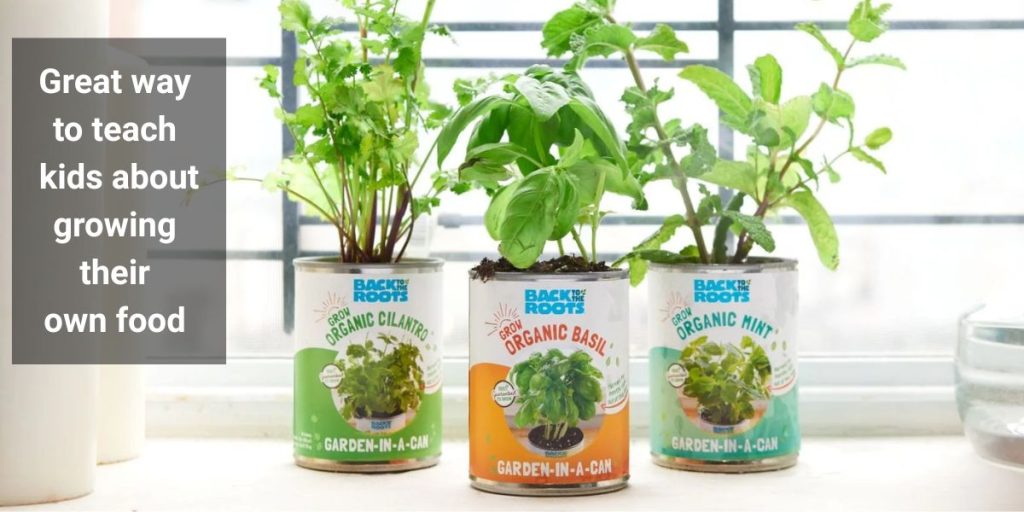

Best for: Beginners wanting familiar soil growing with convenient packaging
Brand Background: Back to the Roots was founded by two UC Berkeley students passionate about sustainable food systems. They focus on making gardening accessible and educational, with products sold in major retailers nationwide.
Best Plants: Herbs (basil, cilantro, oregano), cherry tomatoes, peppers
Price Range: $8-$15 per can, $25-$35 for variety packs

10. AquaSprouts Garden (Aquaponic System)
The AquaSprouts Garden transforms any standard 10-gallon fish tank into a complete aquaponic ecosystem. Fish waste provides natural fertilizer for plants, while plants filter the water for fish. This closed-loop system demonstrates sustainable food production while providing both fresh vegetables and fish.
Product Pros
Product Cons
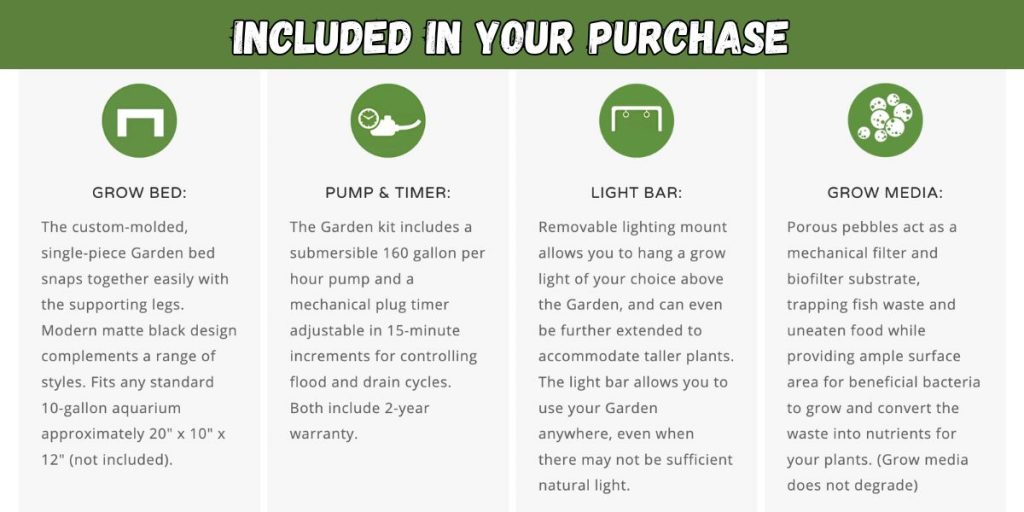
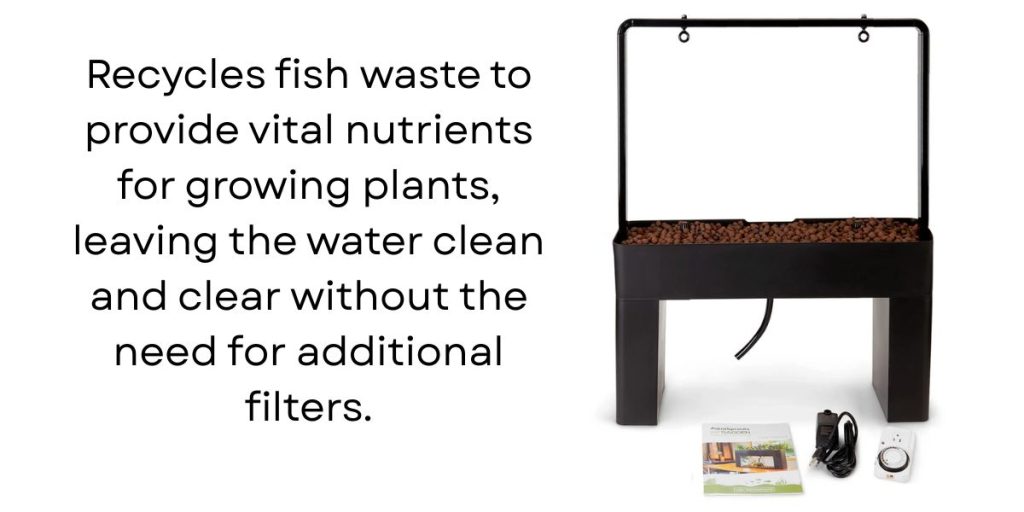
Best for: Educational growing and sustainable food production
Brand Background: AquaSprouts was developed through a successful Kickstarter campaign by engineers passionate about sustainable growing. Their system makes aquaponics accessible to home growers without requiring custom tank construction.
Best Plants: Lettuce, herbs, leafy greens, small tomatoes (plus goldfish or bettas)
Price Range: $170 for the 10-gallon growing kit (tank and fish sold separately)

11. Hamama Microgreen Kit (Microgreen System)
Hamama has perfected the art of simple microgreen growing with their soil-free growing pads. Each kit produces restaurant-quality microgreens in just 7-10 days without soil, fertilizer, or complicated equipment. The company focuses on making superfood growing accessible to busy households.
Product Pros
Product Cons
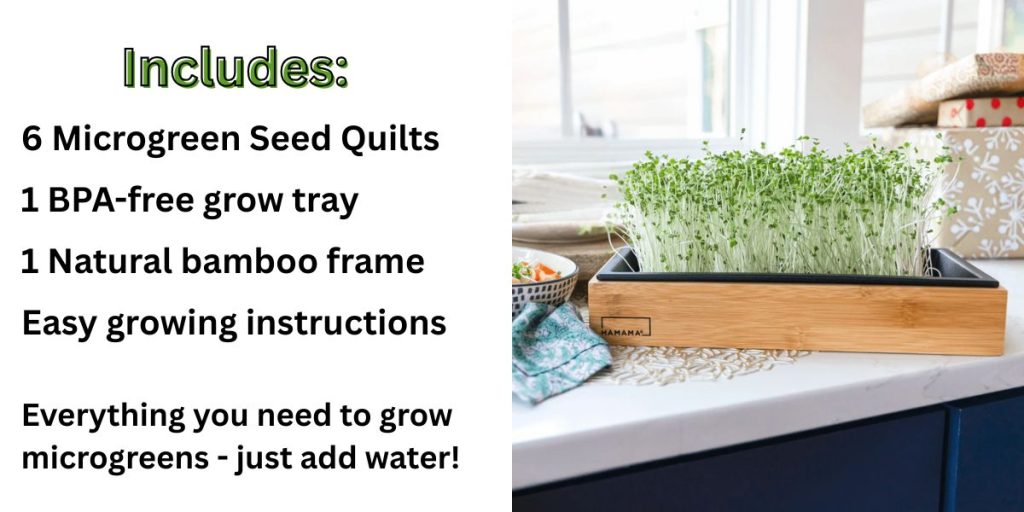
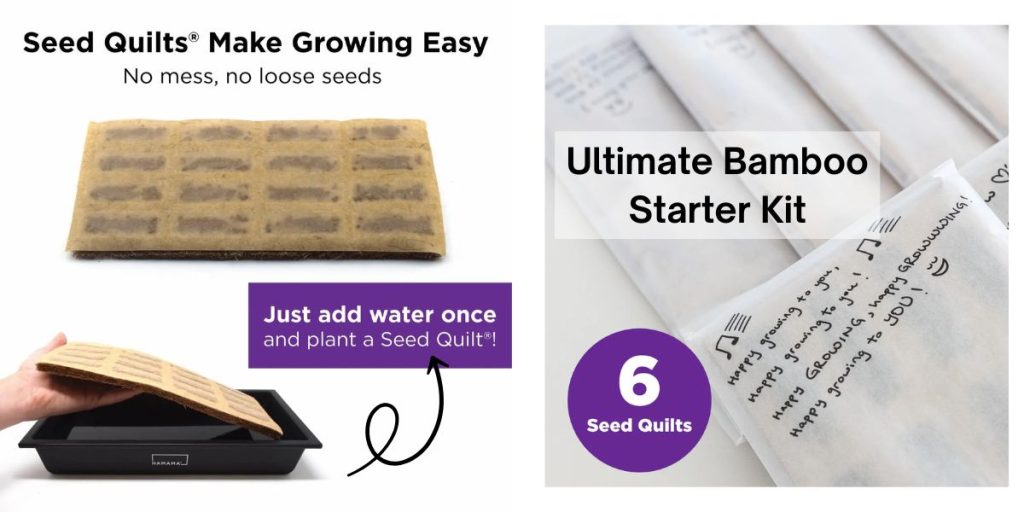
Best for: Quick harvests of nutrient-dense baby greens
Brand Background: Hamama was founded by a team focused on making nutrition-dense foods accessible to busy families. Their soil-free growing pads eliminate the complexity traditionally associated with microgreen production.
Best Plants: Arugula, radish, broccoli, kale, mustard, sunflower
Price Range: $35-$116 for starter kits, $16-$20 per growing pad refill
Related post: Learn more about how to grow microgreens indoors.

12. Back to the Roots Mushroom Kit (Mushroom Growing)
Back to the Roots mushroom kits provide everything needed to grow restaurant-quality oyster mushrooms at home. Each kit contains a pre-colonized growing block that produces multiple flushes of fresh mushrooms with just daily misting. No special equipment or growing experience required.
Product Pros
Product Cons
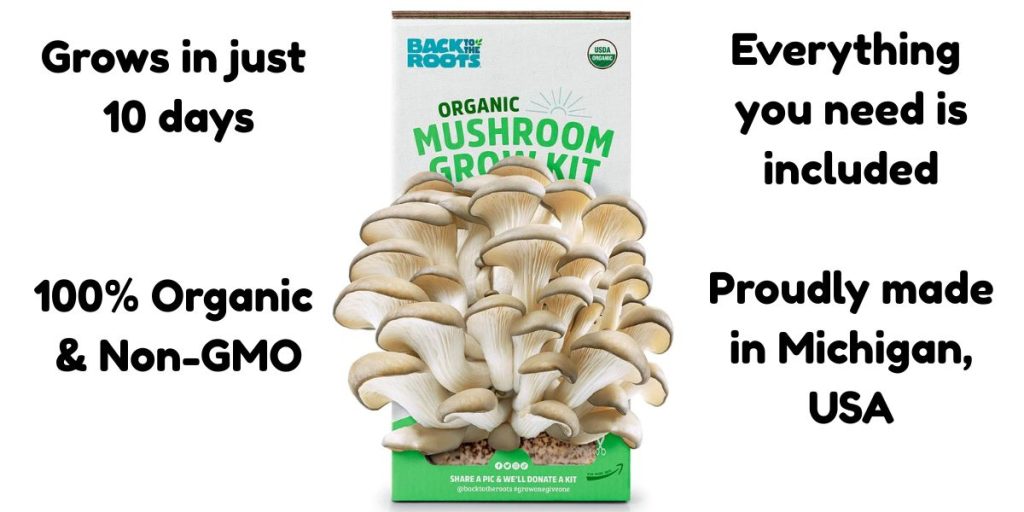
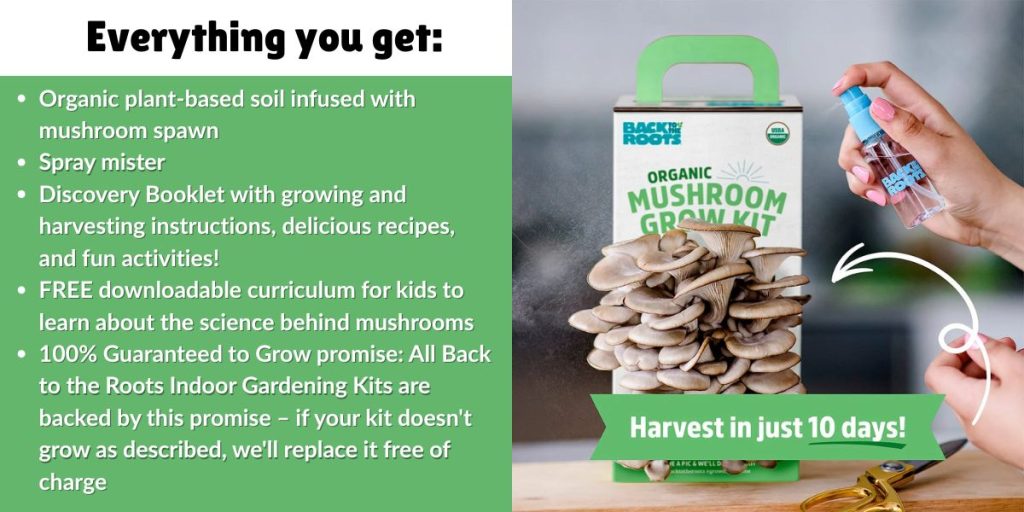
Best for: Gourmet mushroom production with minimal space and light
Brand Background: Back to the Roots extends their sustainable growing mission to mushroom cultivation, making gourmet varieties accessible to home growers. Their kits use the same techniques employed by commercial mushroom farms.
Best Varieties: Oyster mushrooms (multiple color varieties available)
Price Range: $20 per growing kit, $40 for variety packs
Best Indoor Growing Systems: Choose The Perfect One For You
Consider Your Experience Level
Beginners should start with plug-and-play systems like AeroGarden or Back to the Roots kits, while experienced growers can handle more complex systems like Tower Garden or Hydrofarm NFT systems.
Match Your Space and Budget
Countertop systems work well for herbs and small spaces, while vertical towers and larger hydroponic systems can feed entire families but require more room and investment.
Think About Your Indoor Growing Goals
Quick herb production suits countertop gardens, while serious vegetable growing requires larger hydroponic or aeroponic systems. Educational goals might favor aquaponics or mushroom kits.
Factor in Ongoing Costs
Consider electricity usage, replacement parts, nutrients, and proprietary growing supplies when calculating long-term costs beyond the initial system purchase.
Conclusion
The best indoor growing systems depend on your space, budget, experience level, and growing goals. Whether you choose a simple Mason jar Kratky setup or a sophisticated Plantui smart garden, indoor growing puts fresh, homegrown produce within reach year-round.
Start with a system that matches your current situation and experience level. As you develop your indoor growing skills and see the benefits of homegrown produce, you can always expand or upgrade to more advanced systems. With these top brand picks, fresh herbs, vegetables, and even mushrooms can be just an arm’s reach away, regardless of the season or weather outside.



